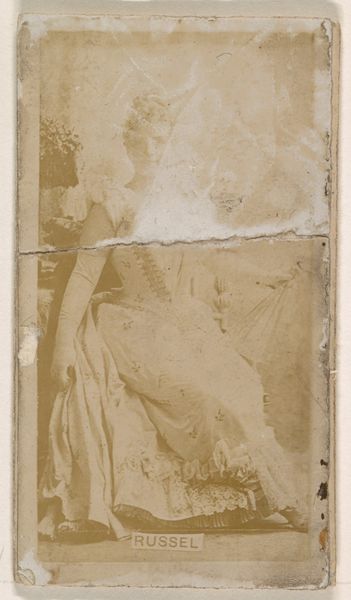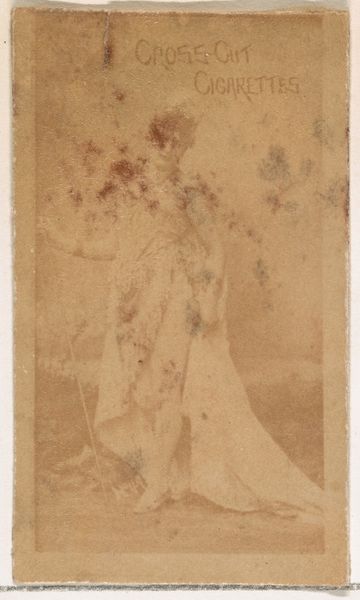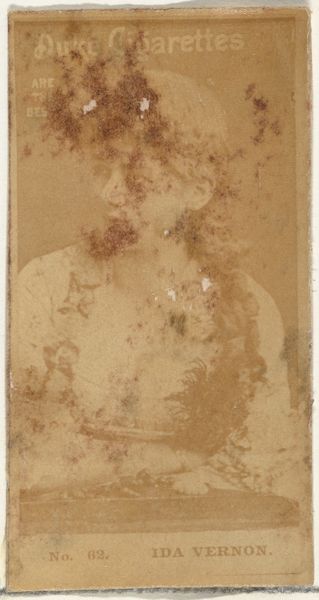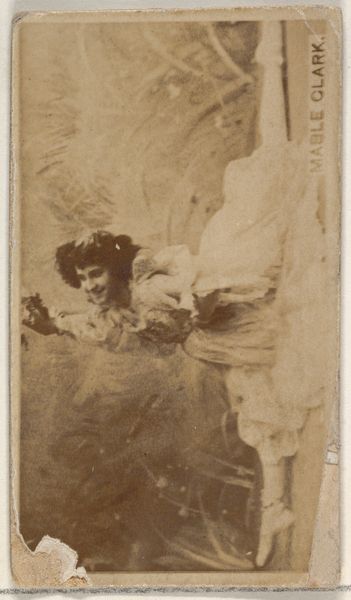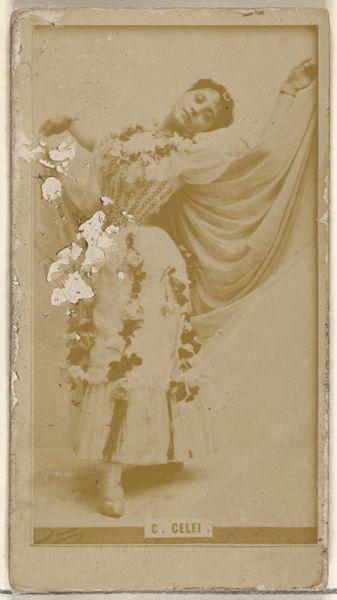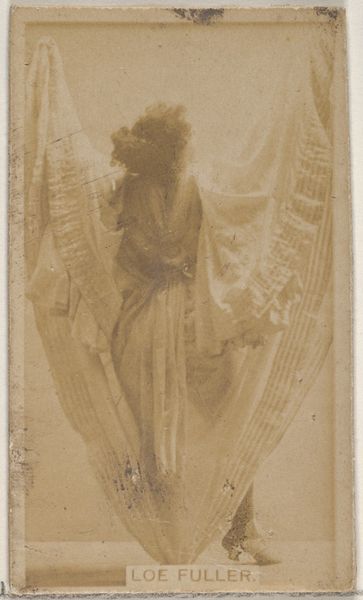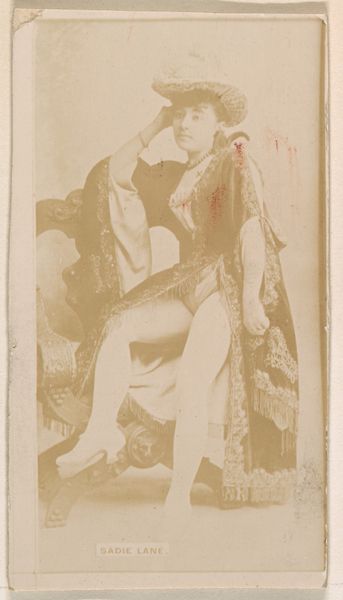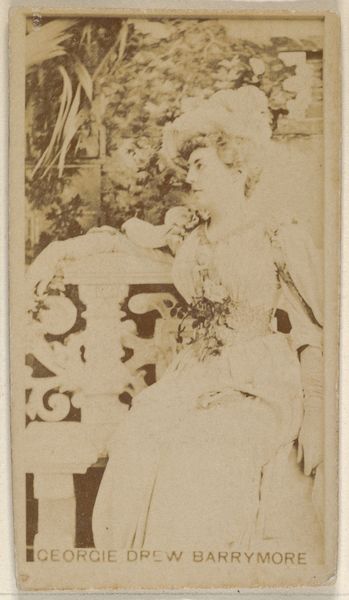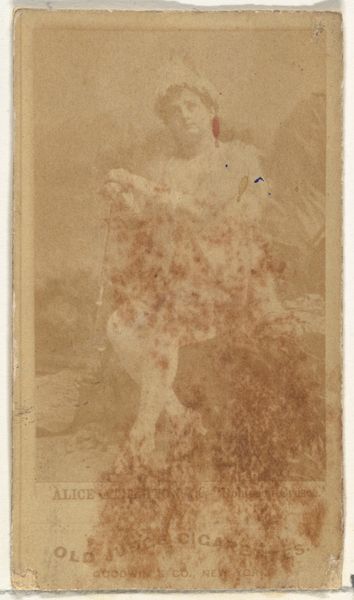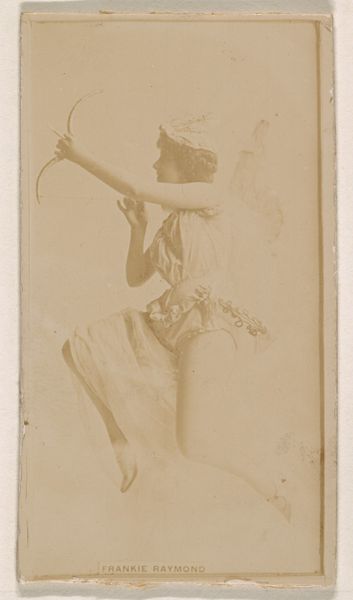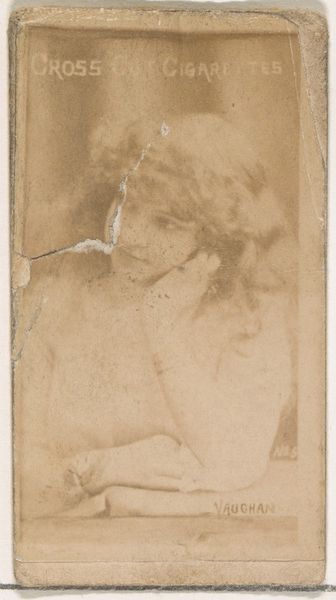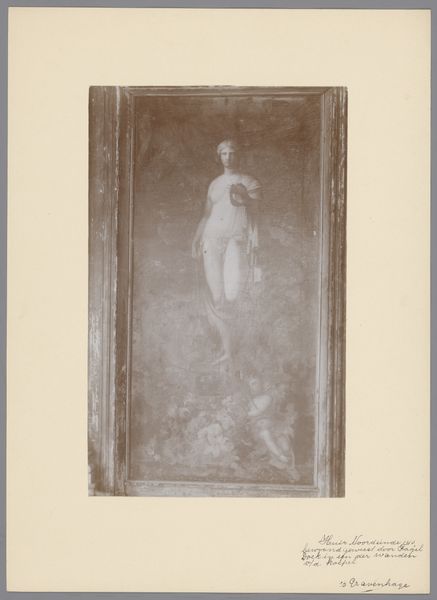
Amelia Glover, from the Actors and Actresses series (N145-8) issued by Duke Sons & Co. to promote Duke Cigarettes 1890 - 1895
0:00
0:00
drawing, print, photography
#
portrait
#
drawing
# print
#
photography
Dimensions: Sheet: 2 11/16 × 1 3/8 in. (6.8 × 3.5 cm)
Copyright: Public Domain
Editor: This is a trade card from around the 1890s, a portrait of Amelia Glover, an actress. It was printed by Duke Sons & Co. to promote their cigarettes. There's a softness to it, a hazy, romantic feel. What strikes you about this piece? Curator: What immediately grabs my attention is the way this seemingly simple portrait is embedded within a larger capitalist and social structure. This image, designed as commercial ephemera, played a role in both promoting smoking and cementing celebrity culture. How did this commodification impact women like Amelia Glover? Were they empowered or exploited by this level of exposure? Editor: That's a perspective I hadn't considered. I was just looking at her dress! Curator: The dress is part of it. Consider the performative nature of femininity at the time. Actresses, like Glover, were both admired and scrutinized, their bodies and images becoming objects of public consumption. And the male gaze? How do you think that played a role in the proliferation of images like this? Editor: It feels like there’s a tension. She's presented as desirable, but the image is also quite dignified. Almost regal. Curator: Precisely! It speaks to the contradictions women faced. Simultaneously idealized and objectified, figures like Glover navigated a complex social landscape. These trade cards weren’t just innocent marketing; they were actively constructing and reinforcing societal norms around gender, class, and consumerism. Editor: I never would have thought a cigarette card could be so complex. It's more than just a pretty picture. Curator: Absolutely. By looking critically at these everyday objects, we can unravel hidden power dynamics and understand the complexities of representation. This card, seemingly trivial, actually opens a window onto late 19th-century social anxieties and the evolving role of women in the public sphere.
Comments
No comments
Be the first to comment and join the conversation on the ultimate creative platform.
